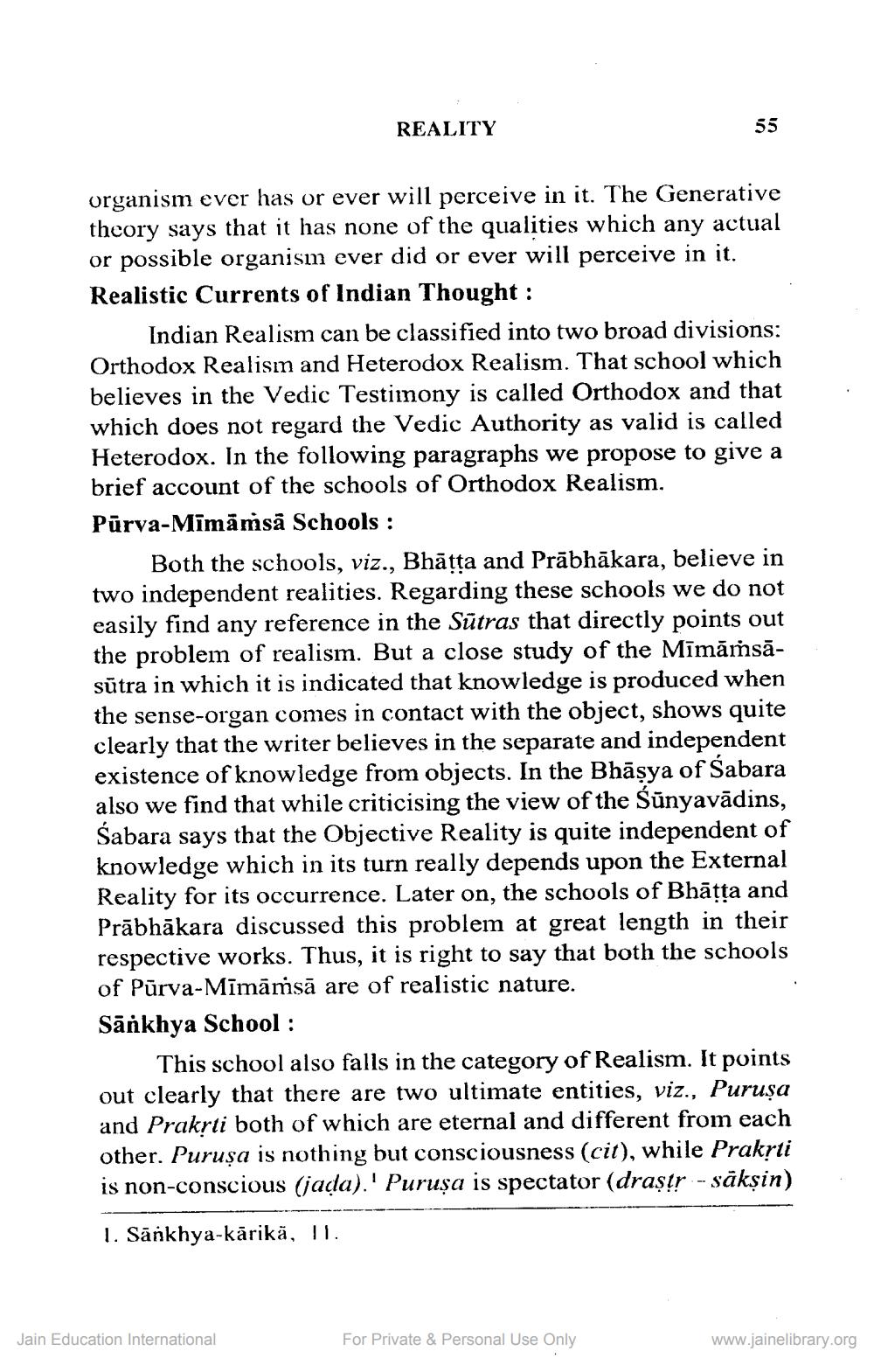________________
REALITY
55
organism ever has or ever will perceive in it. The Generative theory says that it has none of the qualities which any actual or possible organism ever did or ever will perceive in it. Realistic Currents of Indian Thought :
Indian Realism can be classified into two broad divisions: Orthodox Realism and Heterodox Realism. That school which believes in the Vedic Testimony is called Orthodox and that which does not regard the Vedic Authority as valid is called Heterodox. In the following paragraphs we propose to give a brief account of the schools of Orthodox Realism. Pūrva-Mīmāmsä Schools :
Both the schools, viz., Bhātta and Prābhākara, believe in two independent realities. Regarding these schools we do not easily find any reference in the Sūtras that directly points out the problem of realism. But a close study of the Mīmāṁsāsūtra in which it is indicated that knowledge is produced when the sense-organ comes in contact with the object, shows quite clearly that the writer believes in the separate and independent existence of knowledge from objects. In the Bhāşya of Sabara also we find that while criticising the view of the Sūnyavādins, Sabara says that the Objective Reality is quite independent of knowledge which in its turn really depends upon the External Reality for its occurrence. Later on, the schools of Bhātta and Prābhākara discussed this problem at great length in their respective works. Thus, it is right to say that both the schools of Pūrva-Mīmāmsā are of realistic nature. Sānkhya School :
This school also falls in the category of Realism. It points out clearly that there are two ultimate entities, viz., Purusa and Prakrti both of which are eternal and different from each other. Puruşa is nothing but consciousness (cit), while Prakrti is non-conscious (jada).' Puruşa is spectator (draşır - sāksin)
1. Sānkhya-kārikā, 11.
Jain Education International
For Private & Personal Use Only
www.jainelibrary.org




